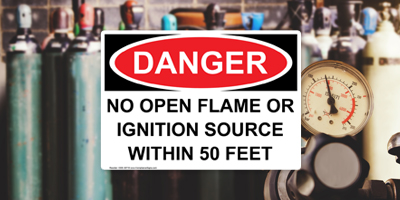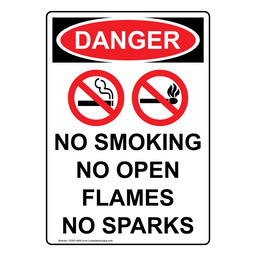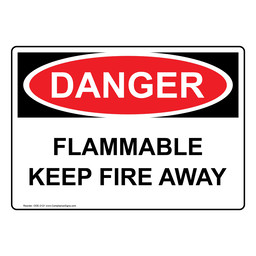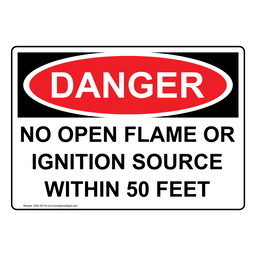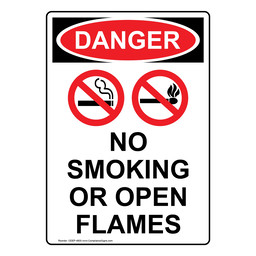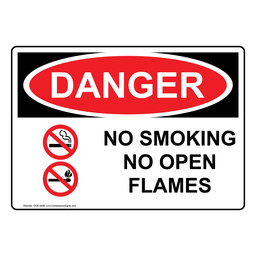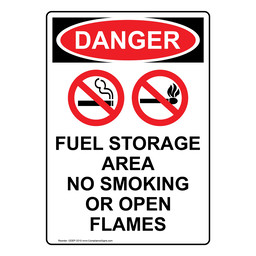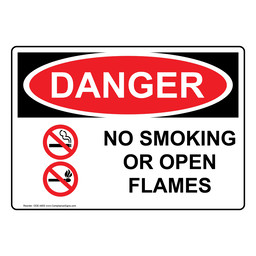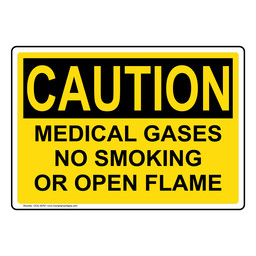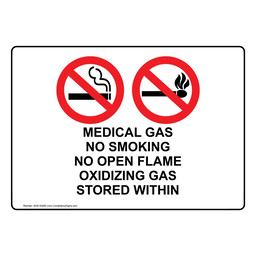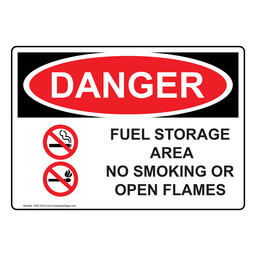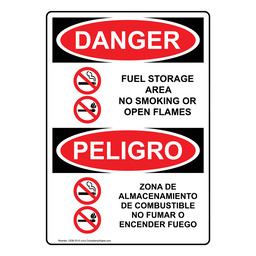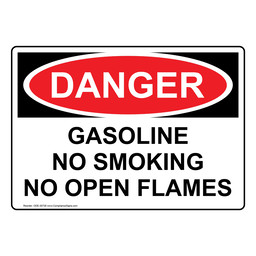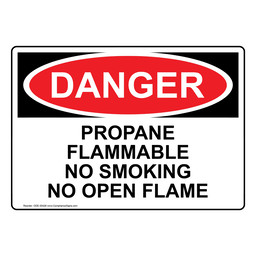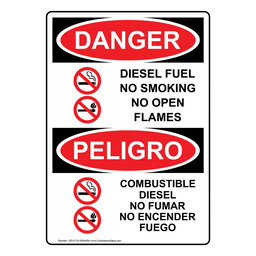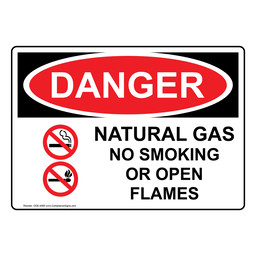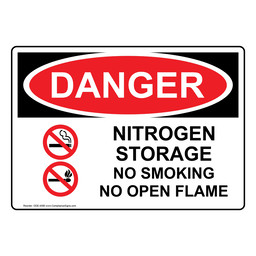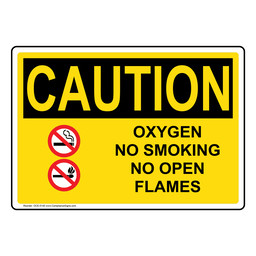Ensure that your employees and visitors know where fire is not allowed.
No Open Flame Safety Signs are essential for ensuring safety wherever fire or sparks create fire and explosion hazards. These signs communicate critical safety rules and remind individuals to exercise caution and follow safety protocols.
No Flame signs often are used in industrial settings such as manufacturing plants, chemical facilities and oil refineries. Fuel stations and storage facilities also use them. In these environments, the presence of flammable materials makes the presence of fire extremely dangerous.
Post "No Fire" signs to clearly communicate to workers and visitors that open flames are not allowed. Displaying the Open Flame symbol helps minimize the risk of ignition and catastrophic incidents.
Protect your employees and property with no flame signs from ComplianceSigns.com.
Reduce The Risks of Open Flames
Open fires can lead to fires in any situation, but they are especially dangerous in manufacturing and industrial settings. The NFPA reports that an estimated 37,910 fires took place in industrial or manufacturing properties over a 5-year period. The most damaging fires took place in manufacturing facilities.
Focusing on three critical actions can significantly reduce the risks of open fires in industrial settings:
1. Ban Open Flames in Sensitive Areas
- Train employees on safe handling procedures, and remind them of these rules with no fire signage and symbols.
- Grinding operations can cause sparks just as dangerous as open fire.
- Consider custom no flames signs that apply to your specific materials and workspaces.
2. Store, Use and Dispose of Materials Properly
- Always use storage safety cabinets that meet OSHA and NFPA construction and design requirements. Never store incompatible items near each another - including chemical groups like oxidizers and flammables. Store fuels only in approved safety cans.
- Designate a well-ventilated area of your workspace to use flammable materials like solvents and fuels. Be sure to keep open flames out of the area, including cigarettes, matches and sparks.
- Establish standards for removing and safely disposing of flammable solvents, oily rags and fuels. Standards should indicate correct disposal containers and required PPE.
3. Keep Areas Clean
- Immediately wipe up or contain spills.
- Designate specific spaces for using and storing hazardous materials.
- Don't let items collect over time. Put them away when they are no longer needed.
OSHA Resources and Information on Flame Hazard Safety:
OSHA Standard 1910.269 App E - Protection From Flames and Electric Arcs
Flammable Liquids Training Introduction (PDF)
OSHA Standard 1926.152 - Flammable Liquids
OSHA Standard 1910.119, Process safety management of highly hazardous chemicals

